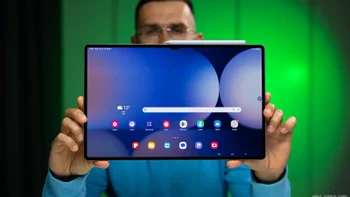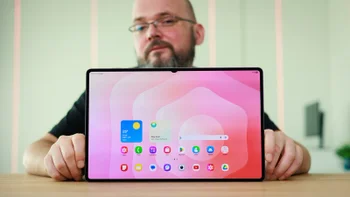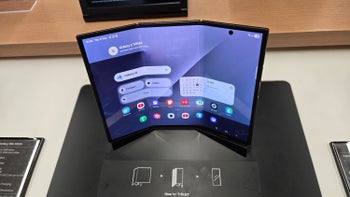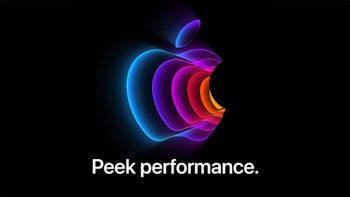Apple may give MacBooks the feature it refused to add so far
The company could be planning to add touch panels to MacBook Pro models by 2026.

Apple is reportedly planning a major change for its MacBook lineup, possibly adding touchscreens for the first time over the next year or two.
Next year, Apple is expected to launch the next generation of MacBooks, and it looks like a big shift is coming. According to a trusted Apple analyst, the much-rumored OLED MacBook Pro will include a touch panel using on-cell touch technology, with mass production expected by the end of 2026.
Meanwhile, the low-cost MacBook, which is expected to run on Apple’s A-series chips, likely won’t get a touchscreen – at least in the first generation. The second-generation budget MacBook, possibly arriving in 2027, might introduce a touchscreen, but that’s far enough out that it’s still uncertain.
Previously, it was rumored that MacBook Pro models with M5 chips would arrive in late 2025. But Bloomberg’s Mark Gurman reported later that Apple might push the release back to early 2026. Gurman now expects the MacBook Pro to get an OLED display sometime between the end of 2026 and early 2027.
This could mean Apple updates the MacBook Pro line twice in the same year – and that wouldn’t be unprecedented. For reference, Apple released M2 Pro/Max models in January 2023, then M3, M3 Pro/Max models in October 2023. Following that pattern, we could see M5 models in January 2026, followed by an OLED and touch-equipped M6 generation in October 2026.
The OLED MacBook Pro is expected to bring other changes too, including a thinner design and a smaller notch – and now, it looks like touchscreen support is joining that list.
In my opinion, adding a touchscreen is a smart move by Apple and one that many users might welcome. It also brings the MacBook more in line with some Windows rivals, like the Asus ProArt P16 (H7606) or the Acer Swift 14 AI. Those models might not match a MacBook Pro’s performance, but they show that a touchscreen can be a key selling point for some buyers.
And if it is not your thing, I think there will still be non-touch versions available for those who don’t need it, probably at a lower price. However, for now, these are all rumors, so we will have to wait and see exactly what Apple delivers at the end. But the idea of combining touch with a MacBook Pro OLED panel definitely makes the upcoming lineup more enticing.
Touchscreens could finally come to MacBooks
Next year, Apple is expected to launch the next generation of MacBooks, and it looks like a big shift is coming. According to a trusted Apple analyst, the much-rumored OLED MacBook Pro will include a touch panel using on-cell touch technology, with mass production expected by the end of 2026.
MacBook models will feature a touch panel for the first time, further blurring the line with the iPad. This shift appears to reflect Apple’s long-term observation of iPad user behavior, indicating that in certain scenarios, touch controls can enhance both productivity and the…
— 郭明錤 (Ming-Chi Kuo) (@mingchikuo) September 17, 2025
This change seems to stem from Apple observing iPad users over the years. In some scenarios, touch controls can boost productivity and improve the overall experience – something Apple appears ready to bring to its MacBook Pro users.
OLED, touch, and a bigger shakeup
Previously, it was rumored that MacBook Pro models with M5 chips would arrive in late 2025. But Bloomberg’s Mark Gurman reported later that Apple might push the release back to early 2026. Gurman now expects the MacBook Pro to get an OLED display sometime between the end of 2026 and early 2027.
This could mean Apple updates the MacBook Pro line twice in the same year – and that wouldn’t be unprecedented. For reference, Apple released M2 Pro/Max models in January 2023, then M3, M3 Pro/Max models in October 2023. Following that pattern, we could see M5 models in January 2026, followed by an OLED and touch-equipped M6 generation in October 2026.
Touch makes the MacBook even more appealing
In my opinion, adding a touchscreen is a smart move by Apple and one that many users might welcome. It also brings the MacBook more in line with some Windows rivals, like the Asus ProArt P16 (H7606) or the Acer Swift 14 AI. Those models might not match a MacBook Pro’s performance, but they show that a touchscreen can be a key selling point for some buyers.
And if it is not your thing, I think there will still be non-touch versions available for those who don’t need it, probably at a lower price. However, for now, these are all rumors, so we will have to wait and see exactly what Apple delivers at the end. But the idea of combining touch with a MacBook Pro OLED panel definitely makes the upcoming lineup more enticing.
Follow us on Google News









![A new Android bug is making it impossible to install new apps. Are you affected? [UPDATE]](https://m-cdn.phonearena.com/images/article/176703-wide-two_350/A-new-Android-bug-is-making-it-impossible-to-install-new-apps.-Are-you-affected-UPDATE.webp)



Things that are NOT allowed:
To help keep our community safe and free from spam, we apply temporary limits to newly created accounts: